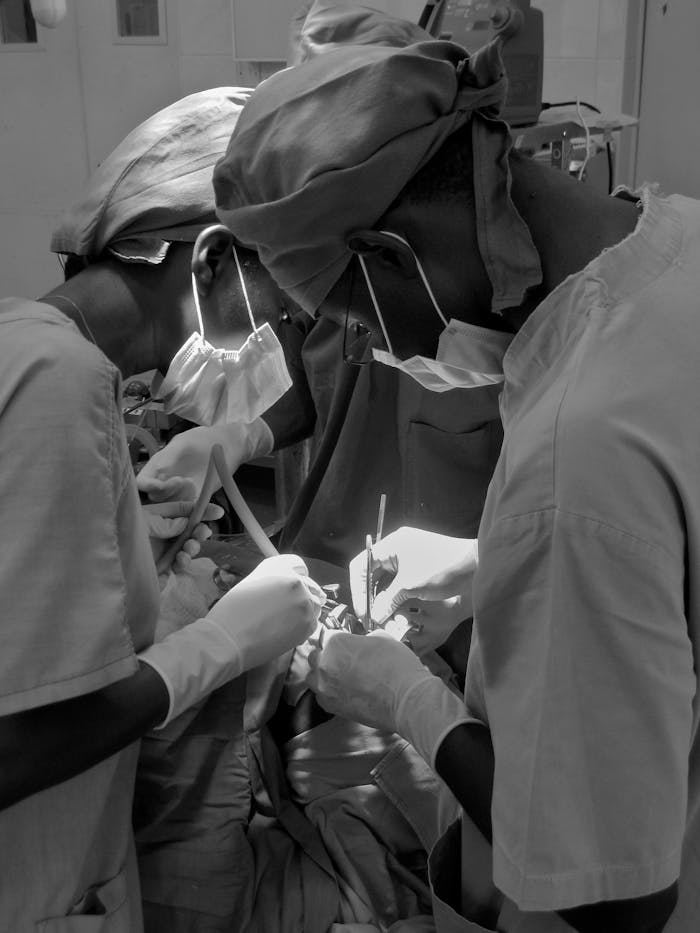Behind the Curtains: A Surgeon’s Journey Through the Hospital Theatre
Behind the curtain: Step into the world of a hospital theatre, a realm often shrouded in mystery and intrigue. As a surgeon, I have had the privilege of navigating this complex ecosystem where science meets art, calmness meets urgency, and life meets hope. Let me take you on a guided tour through the corridors of this extraordinary sanctuary, unveiling secrets that only few outside the medical profession ever perceive.
The Symphony of Silence
Contrary to the bustling appearance of a hospital, stepping into the surgical theatre is like entering a different universe. Imagine a symphony where every participant knows their role to perfection, yet communicates without words. This is theatre silence—pregnant with purpose and anticipation. Each team member, from the scrub nurse to the anesthesiologist, is unwaveringly focused, communicating through subtle gestures and nods. The lull before the incision is a sacred moment, where silence prevails, punctuated only by the affirming double-check of equipment.
The Ritual of Scrubbing In
One of the lesser-known rituals of surgery is the scrubbing in process. This is not merely a matter of hygiene, but a meditative ceremony. As I methodically wash away external distractions and concerns, I prepare my mind for the task ahead. It’s a moment of reflection and mental alignment—a reset button that transitions us from the outside world into the sanctified space of healing.
The Magical Tools of Trade
To the uninitiated, surgical instruments might seem like complex tools. Yet, there is beauty in their precision design. Take, for instance, the scalpel—a delicate, finely honed instrument capable of both immense precision and power. And the intricate art of suturing, resembling the craft of an accomplished seamstress. Modern technology allows us to perform once-impossible feats; lasers that delicately cut and cauterize, robotic arms that provide superhuman precision. Each tool tells a story of evolution, of medicine’s relentless pursuit of advancement.
The Unseen Teamwork
Though the surgeon often serves as the face of the operation, surgery is a true team sport. The anesthesiologist carefully balances the patient’s consciousness and pain, while nurses ensure everything runs smoothly. The pathologist’s insights guide real-time decisions, with each member’s expertise critical to the operation’s success. It is a dance, each step meticulously choreographed, every participant integral to the harmony of outcomes.
The Emotional Spectrum
In the theatre, emotions run the gamut. There’s adrenaline as we tackle the unexpected, persistence during tedious but necessary tasks, and relief when a complex procedure concludes successfully. Yet, there is also reverence—a deep respect for patient trust, as every surgery represents someone’s life at a crossroads. These emotions weave together to create an unspoken bond between surgeon and patient, even if they never directly meet.
The Aesthetic of Cleanliness
After the procedure, the meticulous ritual of cleaning begins. The theatre must be restored to a pristine state, akin to resetting a stage before the next act. It’s a reflection of our unwavering commitment to safety, ensuring that each patient enters an environment of uncompromised sterility.
Conclusion
Hospital theatres are not merely rooms within buildings; they are the crucibles of human vitality, where decisions have profound import. The next time you pass a hospital, consider the hidden world within—a place where surgeons and medical staff unite science with compassion, art with precision, all to forge stories of healing and hope. The theatre is more than a workplace; it is the heart of medicine, and through its corridors, we surgeons navigate the extraordinary journey of saving lives.



